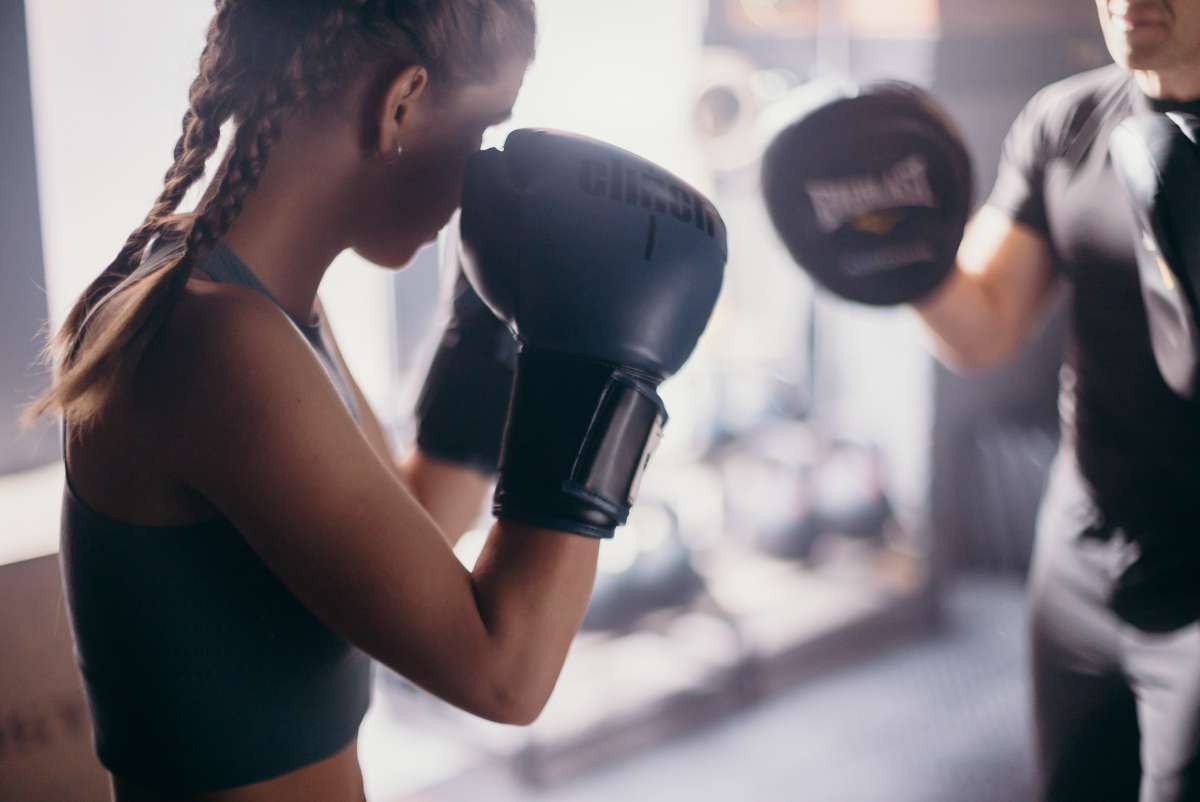If you're thinking about taking up new martial art, you may be wondering what the difference is between boxing and kickboxing. Both disciplines involve striking an opponent with your fists or feet, but there are some key distinctions. Here's a look at the key differences between boxing and kickboxing.
KickBoxing FAQs
Kickboxing is dangerous. It has an average injury rate of 40 out of 1000 minutes of practice time, or 2.5 injuries an hour. This is higher than the average for other martial arts, where the average is one injury per hour. However, the injury rate for professional fighters is double that for amateurs.
In kickboxing, both punches and kicks are allowed. Therefore, the question of which style will win has been asked numerous times and has been practically answered quite a few times. The result is that kickboxing wins a one-on-one fight with boxing due to its wider variety of techniques.
Whether you choose kickboxing or boxing is really up to you. You will have more technique from kickboxing, but it takes longer to train to a high level of proficiency by incorporating kicks and punches instead of punches exclusively. Kicks also give you more options in defending yourself than pure boxing training.
Kickboxing belts can differ by country and school; in most cases, there are nine belts. The belts go from orange to green, blue, purple, red, first brown, second brown and third brown to black belt.
Kickboxing is good for street fights seeing as it's an effective stand-up striking art. In addition, it's a combination of boxing, karate, and Muay Thai, so it offers more options than many fighting styles to protect oneself in a street fight.
Kickboxing Vs Boxing
The main difference between Kickboxing and boxing is that in Kickboxing, hands and feet are allowed to use at the same time or whenever they want to, but in boxing, only hands can be used. Kickboxing while practising includes punches and kicks, too, while boxing includes punches and some blocks.
Kickboxing is usually practised for staying fit or for self-health issues, and for self-defence, it includes punches and licks, too, as the name says. The sport is a two-person sport that allows each other to place punches, blocks, and kicks on each other, but the requirement is that they are all placed above the waist and not below it.
Boxing is a sport that requires full strength, endurance, speed, and reflexes simultaneously. Boxing, too, is a two-person sport and is a combat sport. In boxing, only hands can be sued while practising the sport. Feet are not allowed. It generally includes- punching, strikes on the elbow, locks, and even throwing.
Comparison Table Between Kickboxing And Boxing
Parameters Of Comparison Kickboxing
Strategies
The strategy of defensive and attacking. Kickboxing includes punches and kicking, making it an attacking strategy and based on attacking more.
Body Posture
Kickboxing is always about attacking themselves, and the position is more about attacking the other person in the square-like position.
Clinching
Kickboxing includes throwing each other to the other end, just like martial arts, so in kickboxing, if you clench your opponent, you will most likely be thrown to another end by your opponent.
Spacing
In kickboxing, the players stay as far as possible because the kicks are the strongest, so by staying far, you can easily limit the power of that kick.
Punches
In both sports, punches are quite similar. The only difference is that kickboxing includes feet too.
Parameters Of Comparison Boxing
Strategies
Boxing includes only punches and makes the player more attentive towards defending themselves.
Body posture
The posture of the body of the boxers is more towards the side as they are defending themselves from the punches, so they have to minimize the space available for the other person’s attack.
Clinching
This is very common in boxing. It includes grabbing the opponent with both hands.
Spacing
In boxing, there is less spacing, as it includes punching your opponent, so you have to stay as close as you can be to your opponent so it is easier for you to punch.
Punches
Boxing is all about punching, so this sport makes the punches stronger.
What Is Kickboxing?
Kickboxing is usually practised for staying fit or for self-health issues, and for self-defence, it includes punches and licks, too, as the name says. The sport is a two-person sport that allows each other to place punches, blocks, and kicks on each other, but the requirement is that they are all placed above the waist and not below it.
Kickboxing is a sport that stands different from other sports like karate and martial arts. It includes way different movements from the rest of the sports. The movements in Kickboxing include kicking, elbow strikes, throws, locks, and many more.
What Is Boxing?
Boxing is a sport that requires full strength, endurance, speed, and reflexes simultaneously. Boxing, too, is a two-person sport and is a combat sport. In boxing, only hands can be sued while practising the sport. Feet are not allowed. It generally includes- punching, strikes on the elbow, locks, and even throwing.
Boxing includes only punches and makes the player more attentive towards defending themselves. The posture of the body of the boxers is more towards the side as they are defending themselves from the punches, so they have to minimize the space available for the other person’s attack.
Main Differences Between Kickboxing And Boxing
- The main difference between Kickboxing and boxing is that Kickboxing includes using both hands and feet altogether, while boxing is all about punches and allows you to use your hands only.
- Kickboxing is a sport that is about attacking strategy, but boxing is about defensive strategy.
- The person is always in a side position in boxing to defend themselves, while in Kickboxing, the person is in a square-like position.
- Both sports include punches, but Kickboxing includes punches and feet, and boxing includes just punches.
- The technique of clinching is more useful and effective in boxing as it enables you to grab the opponent with both hands, while in Kickboxing, it will let your opponent throw you to the other end of the ring.
Key Differences Between Boxing And Kickboxing
It’s time to look at the critical differences between boxing and kickboxing in a few important areas.
Rules
Boxing has two main rulesets- amateur and professional. All bouts are contested in a square ring with 3-minute rounds and 1-minute rest. Amateur matches are three rounds, and the volume and accuracy of punches are the main goals. Usually, the judges decide the winner based on who landed more punches. Knockdowns are allowed but not the primary objective.
The preferred outcome is the knockout in professional boxing, so more emphasis is put on power and damage. As a result, matches are much longer, ranging from 4 to 12 rounds for championship fights.
Kickboxing fights are also fought in 3 or 5 3-minute rounds with 1-minute rests in a boxing ring.
The scoring is taken directly from boxing, and each round is scored individually on a 10-point must system. Still, forward-thinking organizations like ONE FC are trying to break out of this mould and score the fights in their entirety. Arguably more suitable for the shorter kickboxing matches.
The knockout is still the most desired outcome of the fight, and damage and aggression are always rewarded.
Punches, every kind of kick, and knees are permitted in kickboxing, and only elbows are forbidden. Clinches are very short, and no striking is allowed in the clinch, the most significant difference between kickboxing and Muay Thai.
Equipment
Both boxing and kickboxing competitions are done with boxing gloves and shorts. Mouthguards are mandatory (I doubt that someone would choose not to wear one anyway).
Boxers use special lightweight shoes that help with traction and stability on the ring. Kickboxers fight barefoot because of the kicks, but ankle wraps with thin shin protection can often be used even by top fighters.
You will need a few more protective pieces of gear like shin guards and knee pads if you spar kickboxing for the gym. But the padded gloves, shorts, hand wraps, and other accessories, in the words of the famous UFC commentator Bill Goldberg, are virtually identical between boxing and kickboxing.
Techniques
The addition of kicks makes kickboxing quite different from boxing. However, the punches and the ways to defend them are precisely the same. Kickboxing borrowed them from boxing and then added the kicking game.
Kickboxing rules allow for all kinds of kicks. Various specialists from taekwondo and karate, for example, managed to use unorthodox strikes with great success.
But the vast majority of fighters rely on the kicking arsenal taken from muay Thai-front kicks and heavy roundhouse kicks to the legs, body, and head.
Many boxers prefer evasion as a means of defence and rely heavily on head movement. Most of it is transferable to kickboxing, but the kicks and knees make the deep dives and the overall low position of the head very dangerous.
So the spectacular evasive movements boxing is known for should be used with caution when kicks are present in the equation.
Stance
Kickboxers need to defend kicks that change the standard lead foot heavy boxing stance. Where boxers stand more bladed and sideways to cover more distance and load up the rear hand, kickboxers can’t afford it for the danger of debilitating leg kicks.
The boxing stance provides a perfect balance between movement, power transfer into punches, and defence. The stance in kickboxing needs to facilitate kick defence, so fighters are forced to stay more upright and not lean too heavily on the front foot.
Footwork
The legs provide strikes from much longer distances than the arms, which changes the whole range of the fight. With punches above the waist being the only weapon to open up the opponent, boxers have to find ways to attack successfully.
This is why footwork in boxing is more important. You always need to try and acquire a more advantageous angle on the opponent. This is because the complexity of boxing movement is greater than the punching itself.
Kickboxers tend to use less sophisticated footwork first because the legs become both a weapon and a target. Second, they have more techniques to spend time on and can’t focus on any single game aspect.
The long-range of kicks changes the overall distance the matches are fought. Usually, the fighters are at a greater distance when they are neutral, and they have to learn to get in and out of range quickly. This makes strikes like the superman punch relatively common in kickboxing and almost nonexistent in boxing.
Movement Differences
You have a much longer reach with kicks than you have with punches. Also, you have to be careful with defending low kicks in kickboxing because only a few decent shots can limit your quickness and movement, giving your opponent a huge advantage.
Hence, the fighters will usually keep a greater distance when on guard and use a lot of quick jabs and in-and-out moves to avoid damage. You can see movement similar to kickboxing in MMA, but it’s highlighted even more because of the thinner gloves and the danger of being taken down.
In boxing, you have a lot less area to cover. Any strike under the waist is prohibited, and you only use your hands, so it’s a lot more difficult to penetrate through the defence of your opponent.
That’s why every successful boxer knows that footwork in boxing is probably even more important than punching, even though you can't use kicks. It would help if you had great evasive mobility, incredible lateral movement, and always being aware of your centre of balance.
Of course, that’s something you’ll benefit from in any martial art, but it is crucial to move quickly but smartly in boxing. You have to understand angles, how to ride both your and your opponent’s shots, cut corners and prevent the opponent from escaping a trap, etc.
The complexity of the boxing movement is incredible, which is why many say boxing is a science, not merely a fight sport. You have to learn how to move your feet and maintain your defence even when going inside on the attack, and there is a big emphasis on head movement.
Which Is Better For Self-Defense: Kickboxing Or Boxing?
It is safe to say that there is no striker more profound than a skilled boxer. In boxing, you are taught to work both offensively and defensively, and striking is pure art. The lack of leg strikes and kick defence makes it a bit tougher to defend yourself only with boxing in a street fight or an assault.
That’s why kickboxing is a bit more efficient for self-defence. You’ll learn how to block and evade kicks, but you also learn the basics of takedown defence, which will enable you to avoid getting tossed to the ground.
To add to it, a wider skill set that enables the use of both legs and arms is highly effective if you are attacked by multiple attackers at once, too.
Boxing relies more on strategy and patience, which can be a problem when attacked unexpectedly somewhere outside the ring. You won’t have time to prepare your game and strategize. However, that doesn’t mean that it is ineffective for self-defence.
On the contrary, boxers have a high IQ when reading the opponent and predicting his next move. That will allow you to patiently wait for the attack and then react powerfully and precisely instead of swinging wildly in hopes to get away with a shot.
Both have their advantages and disadvantages when it comes to self-defence. Still, the biggest difference-maker is the ability to use your arms and legs in kickboxing, while you’re limited only to punching with boxing.
We can safely say that the art of boxing is much more effective in a ring than it is in a street fight with no set rules.
Which One Should You Choose: Kickboxing Or Boxing?
If you want to learn how to defend yourself, then you should go with kickboxing. Not because it’s better, but because it will teach you more diverse striking methods, allowing you to defend yourself against a greater variety of attacks.
Boxing can do that for you, too, but it works better as a regulated sport than merely a self-defence method.
One other factor that you have to think about when choosing between the two is your preference and tolerance toward taking damage. Kickboxing can be extremely brutal, and it doesn’t allow you to focus only on one part of your body when bulking up. You have to work on your lower body strength just as much as the upper body.
Boxers tend to focus more on their upper body and disregard leg training to a certain degree simply because they don’t need to use kicks in combat. So, if your motivation is to become successful in any of the sports, make sure you know what you’re getting into before stepping into the ring.
Finally, if your motivation is only recreational, both martial arts are great. They will get you in pristine physical condition – make sure you don’t skip leg day. The nature of these arts enables you to build endurance, strength, and stamina.
But, it doesn’t stop with the physical. It will also help you get a lot tougher mentally and improve your focus, determination, and patience – all of which are great traits that can translate to everyday life, too.
So, you should choose one or the other based on your preferences and abilities. If you only want to learn self-defence and strength is something that’s your strong side, try kickboxing out. But, if you are more of a strategist who’d take technique and skill overpower, then boxing is absolutely the way to go for you.
Conclusion
So, what is the difference between boxing and kickboxing? In a nutshell, boxing focuses more on punches and kickboxing focuses more on kicks. However, there are many other differences between the two sports. A table comparing key features of boxing and kickboxing can be found below for your reference. If you’re still not sure which sport is right for you, keep reading to learn about the benefits of each one. Ultimately, it’s up to you to decide which combat sport you want to try first!



